New technology delivers prints in seconds
RAPID STEREOLITHOGRAPHIC PRINTING IS HERE!
You’ve probably guessed by now that we’re pretty enthusiastic about 3D printing. Every week we look for the latest and most exciting uses of this amazing technology, so we can let you know about it. New printers, clever projects – we love it all.
We have to admit, though, there’s one thing we don’t love, and that’s how long it takes to actually print something. We can’t deny it; 3D printers are not fast. There can be a certain fascination in watching a project slowly take shape, layer by layer, but really what we want is for it to be finished now, so we can play with it.
Unfortunately, however, the way the technology works means slow printing times are pretty much inevitable. There are a number of factors behind this. Most home printers supply their print material as a filament, and there are physical limits on how fast you can heat filament and feed it to the print head. Try to exceed those limits and you’ll suffer from constant breakages and poor print quality.
Print quality itself is an enemy of speed. Increased print resolution means thinner layers, but a thinner layer takes just as long to print as a thick one – and you need more of them. This applies to all print methods. One way to get around the limits of filaments is to use stereolithography, where lasers or UV light are used to selectively harden a bath of resin, but even here the process is slow, as the resin can only be hardened one thin layer at a time.
No more layers!
Well, that’s the way it’s been done up to now, but a team from the Swiss Federal Institute of Technology has just made a breakthrough that allows rapid stereolithographic printing. How rapid? Very. Instead of print times measured in hours, their new printer can deliver a finished job in less than a minute.
This is obviously a pretty radical development, so you won’t be surprised to learn that it’s based on a totally new way of doing stereolithography. The basic principle is the same – a laser illuminates the resin, hardening it – but it doesn’t do this layer by layer. Instead, it illuminates the whole object at once.
This is made possible by rotating the build tank as the laser illuminates it, so each location in the tank is rapidly exposed to light from multiple angles. When the total illumination received by any one point in the resin reaches a certain threshold it hardens.
So far the system is only capable of printing very small projects – the build volume is currently a 2cm cube. The team are working on expanding this, though, and hope to achieve a 15cm cube soon.
Stereolithography isn’t the simplest option for home printers. The resin generally works out more expensive than filaments, and finished prints are messy and sticky. They need to be washed in alcohol to remove excess resin, and usually they have to be fully cured outside the printer with a UV light source. However, with this breakthrough the technology might win some converts. If you want your projects printed in a hurry, and don’t mind a little extra work, this is an exciting new option.

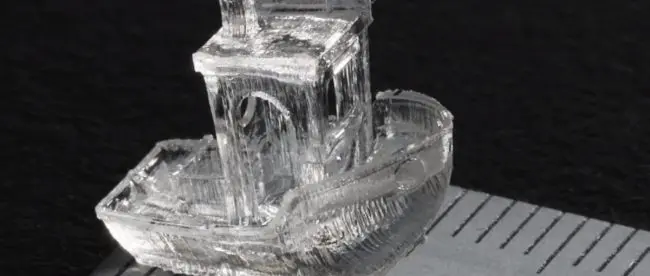
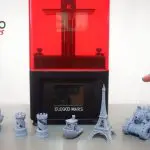

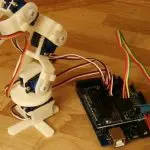
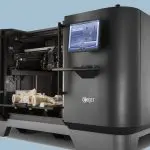

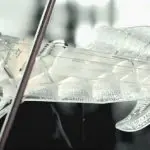
Leave a comment
You must be logged in to post a comment.